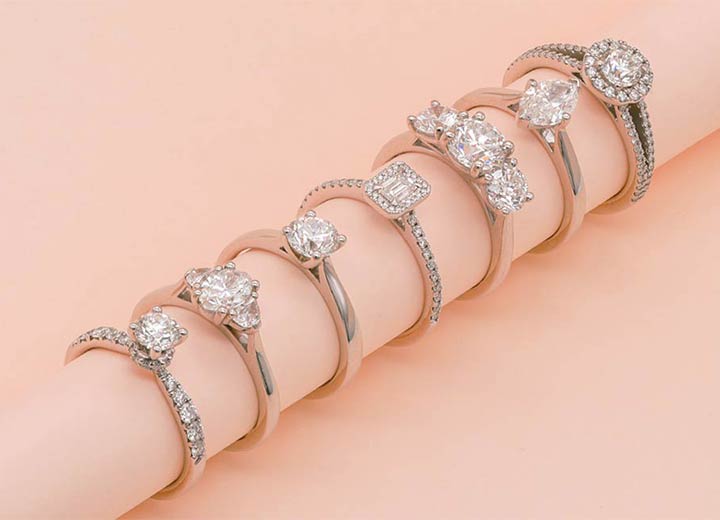
Lab grown diamonds have revolutionized the world of fine jewelry, offering ethical, affordable, and visually identical alternatives to mined stones. When it comes to the creation of these stunning gems, two primary methods dominate the industry: HPHT VS CVD. Understanding the differences between these two techniques is essential for buyers seeking the perfect diamond. Whether you’re a jeweler, a curious enthusiast, or someone planning a proposal, this guide will uncover everything you need to know about lab made diamonds and the battle of HPHT VS CVD.
Table of Contents
What Are Lab Made Diamonds?
Before we dive into HPHT VS CVD, it’s crucial to understand what lab made diamonds actually are. These diamonds are not simulants like cubic zirconia or moissanite. Instead, they are real diamonds with the same chemical, physical, and optical properties as those found in the earth.
The only difference? Lab made diamonds are grown in a controlled laboratory environment using advanced technological processes. As a result, they are more eco-friendly, conflict-free, and typically less expensive than their natural counterparts.
Introduction to HPHT and CVD Methods
Now let’s break down HPHT VS CVD, the two most widely used methods for creating lab made diamonds.
1. HPHT (High Pressure High Temperature)
HPHT stands for High Pressure High Temperature. This method mimics the natural conditions under which diamonds are formed beneath the Earth’s surface.
-
A tiny diamond seed is placed in carbon.
-
Intense pressure (about 5 GPa) and extreme temperatures (over 1,500°C) are applied.
-
The carbon melts and begins to form around the seed, eventually crystallizing into a diamond.
2. CVD (Chemical Vapor Deposition)
CVD stands for Chemical Vapor Deposition. It’s a more modern technique and involves a different approach.
-
A diamond seed is placed in a vacuum chamber filled with carbon-rich gases.
-
The chamber is heated to around 800°C.
-
The gases break down and carbon atoms deposit layer by layer onto the seed, forming a diamond.
The HPHT VS CVD debate centers around which of these methods creates better lab made diamonds in terms of quality, cost, and visual appeal.
Visual and Structural Differences: HPHT VS CVD
Although both methods create stunning lab made diamonds, they do produce slightly different results:
| Feature | HPHT Diamonds | CVD Diamonds |
|---|---|---|
| Growth Time | Typically faster | Slightly slower |
| Inclusions | Often metallic due to growth process | Fewer metallic inclusions |
| Color Quality | May have yellowish tint | Typically colorless or near-colorless |
| Cost of Production | Generally higher | More cost-effective |
| Fluorescence | Less common | Can be more common |
So, when it comes to HPHT VS CVD, it’s not about which method is better in absolute terms, but which suits your personal preferences or budget.
Durability and Hardness
Both HPHT and CVD methods produce diamonds with a hardness of 10 on the Mohs scale. That means lab made diamonds—regardless of how they’re created—are just as durable as natural diamonds. Whether it’s for daily wear or special occasions, lab made diamonds offer incredible toughness and longevity.
Pricing Comparison: HPHT VS CVD
Pricing can play a significant role in your buying decision. Generally, CVD diamonds are more affordable than HPHT ones because of the lower energy requirements and simpler setup.
However, the price also depends on clarity, color, carat, and cut. It’s always wise to compare diamonds side by side when deciding between HPHT VS CVD. A high-quality HPHT diamond may be more expensive than a lower-quality CVD diamond and vice versa.
Which One Is More Eco-Friendly?
Both lab made diamonds methods are far more sustainable than traditional mining. However, CVD tends to have a smaller environmental footprint due to its lower energy consumption and the absence of extreme pressures.
So, if eco-friendliness is a top priority for you, CVD diamonds might slightly edge out HPHT in the HPHT VS CVD showdown.
Certification and Authenticity
Whether grown via HPHT or CVD, all lab made diamonds should come with certification from reputable gemological labs such as GIA (Gemological Institute of America) or IGI (International Gemological Institute). These certifications provide a detailed report on the 4 Cs—Cut, Color, Clarity, and Carat—and confirm that the stone is indeed a diamond.
Look for these certificates when making a purchase to ensure you’re getting what you paid for—regardless of the method behind it.
Pros and Cons of HPHT VS CVD
HPHT Pros:
-
Faster growth process
-
Excellent clarity in high-end stones
-
Suitable for larger carat sizes
HPHT Cons:
-
Higher energy consumption
-
Possible metallic inclusions
CVD Pros:
-
Cost-effective
-
Cleaner growth environment
-
Better color consistency
CVD Cons:
-
May require post-growth treatment
-
Growth lines sometimes visible under magnification
Choosing between HPHT VS CVD is ultimately about understanding these trade-offs.
Final Verdict: Which Method Should You Choose?
There’s no one-size-fits-all answer in the HPHT VS CVD debate. Both methods produce brilliant, genuine lab made diamonds that are virtually indistinguishable from natural ones. Here’s a quick guide to help you decide:
-
Choose HPHT if you’re looking for a classic round brilliant with excellent clarity and don’t mind spending a bit more.
-
Choose CVD if you want a more budget-friendly option with great color and an eco-conscious edge.
Conclusion
Whether you’re drawn to the science behind HPHT VS CVD or simply want a beautiful, ethical gemstone, lab made diamonds are an outstanding choice. With increasing awareness and innovation, these diamonds are reshaping the jewelry market and offering consumers a smarter, more sustainable way to sparkle.
As technology evolves, the gap between HPHT VS CVD continues to narrow, leaving us with one undeniable fact: lab made diamonds are here to stay—and they’re shining brighter than ever.

